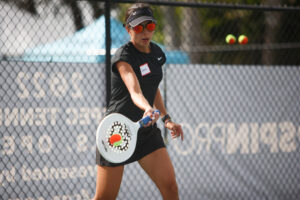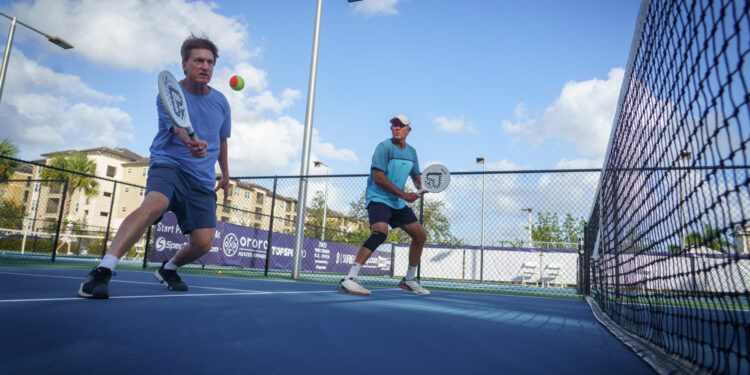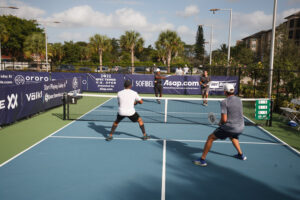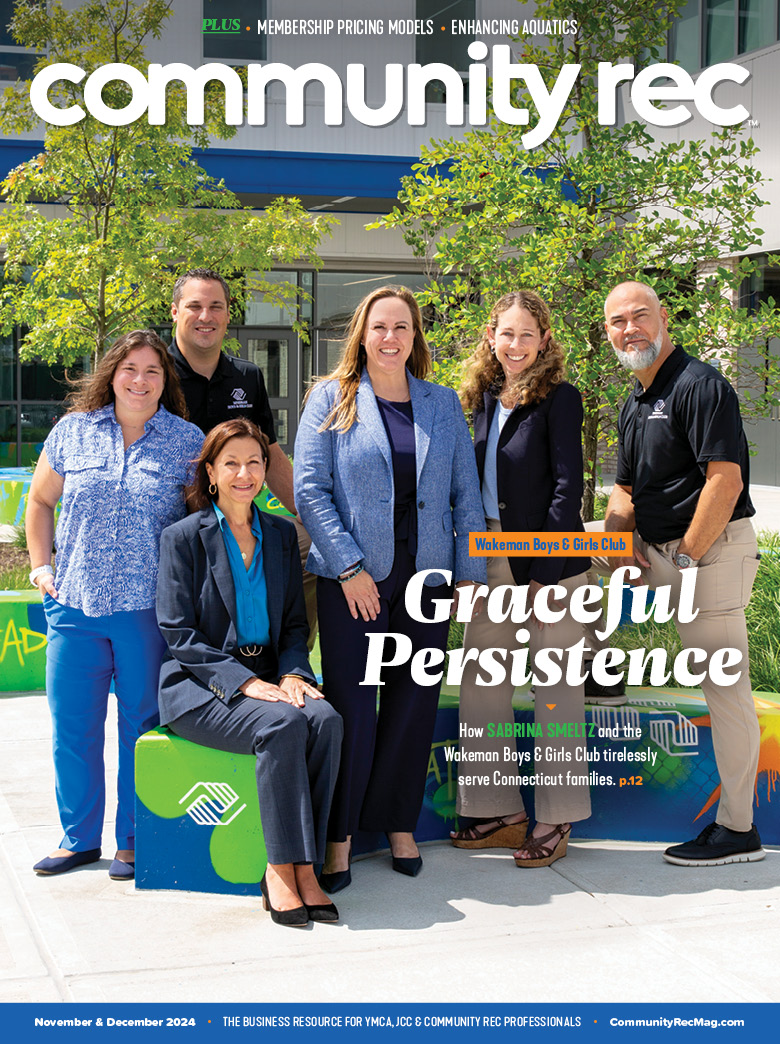While the pickleball craze is still going strong, a new sport called spec tennis is also starting to pick up momentum throughout the U.S. Originally created in 2016 in Northern California as a social experience, spec tennis has now gained its own popularity while being a great bridge to and from tennis.
Nate Gross, the creator of spec tennis and director of Racquet Sports, said he came up with the sport after initially trying to play paddle tennis on a pickleball court. However, the equipment he was using wasn’t right for the court size.
“I started to experiment with different balls and paddles until settling on the orange-dot, low-compression tennis ball and a platform tennis paddle,” said Gross. “Over time, I developed a specific paddle for spec tennis. After that initial trial experience on the pickleball court, I decided to have a tournament to see if others would enjoy playing as much as I did. Eight guys showed up for the tournament and from there, spec tennis was born.”
Spec Tennis vs. Tennis
While Gross’ invention uses the same strokes and strategies as tennis, there are some key differences. First, spec tennis paddles have holes in them and aren’t as powerful as tennis racquets. Also, the court is much smaller and the scoring system is less complex.
“The first to win four points wins a game, the first to win four games wins a set and the first to two sets wins the match,” said Gross. “There’s also a smaller learning curve. Most players can rally back and forth with a day of practice. In tennis, it often takes many private lessons to get to a decent playing level, but that’s not needed in spec tennis.”
Only serving underhand is allowed in Gross’ sport. He said the overhand serve used in tennis is a barrier for many players who feel they can’t play a real match until they are confident in their serve. In spec tennis, serving is easier and is meant to simply get the point started, because the real fun starts after the serve.

Spec Tennis vs. Pickleball
While played on a pickleball court, there is no “kitchen rule” in spec tennis. “In pickleball you can’t ever volley the ball if you are standing in the kitchen/no-volley zone, but in spec tennis you can get as close to the net as you’d like to volley the ball,” said Gross. This makes the strategies between the two sports completely different.”
Other differences include:
- Pickleball uses a solid paddle shorter in length and substantially lighter in weight to the spec tennis paddle.
- The ball used in pickleball is a plastic wiffleball so it doesn’t bounce very high, whereas spec tennis uses the low-compression tennis ball.
- In pickleball, the ball must bounce once on each side of the court before anyone can volley. In spec tennis, this rule doesn’t apply. Players can serve and volley.
- The sound of the pickleball hitting the paddle creates a lot of noise, and there have been issues with noise complaints in several communities. Spec tennis does not create the same noise and is more like the sound of people playing regular tennis.
Feedback and Benefits
Gross said most people who try out the sport really like it. Even better, he said there is a wide range of demographics in spec tennis participants.
“For example, seniors who used to play tennis enjoy having less court to cover, translating their tennis skills and having fun with a variety of levels,” said Gross. “In pure tennis, it’s harder to mix levels together because the strongest players can easily overpower the less-experienced ones with the overhand serve and powerful tennis racquet.”
Parents enjoy playing with their kids because of the easy control of the spec tennis ball. Gross said when parents try to play tennis with their kids, it’s often unproductive and they lose interest quickly or start arguing because they can’t successfully control the ball to one another.
“The close proximity of players makes it a very social experience, compared to tennis where
Players are a lot further away from each other,” said Gross. “It’s the type of sport that grows quickly through word-of-mouth. Players invite all their friends and family to try it because they know even if they are at a higher level than that person, they will still be able to have fun.”
Advice for Rec Centers and Future Hopes
For community recreation centers, Gross said spec tennis can be played on any hard surface even if there’s not a lot of available space like on a gym floor, in a parking lot or tennis/pickleball courts.
“The small learning curve makes it attractive to more of the population,” said Gross. “Many people won’t even give tennis a try because they know how difficult it is. But with spec tennis, it’s very social and inviting to community members of all ages and athletic abilities.”
With the sport’s close relation to tennis, Gross said it’s a great avenue to teach beginners how to play tennis. “Especially for community rec programs where there aren’t certified tennis instructors, they can have successful spec tennis classes because the instruction given to the participants can be very simple,” said Gross. “Offering a class or drop-in play at the same time and location every week is key.”
Gross also recommended to create a party environment when first launching the sport. You can get more community members to come out to an event that feels like a party with food, beverages and music then you can for an event that is too instructional.
Moving forward, Gross said he hopes the sport sees more connectivity so eventually there are tournaments, events and leagues. “There are many pockets of the country with players, but I’m looking to exponentially grow the number of pockets. We recently held an exhibition match between four professional tennis players and it’s going to be televised. We also televised the finals of the 2022 Spec Tennis U.S. Open and I received a handful of messages and emails from viewers who said the sport looks good on TV.”
Want more resources like this sent straight to your inbox each week? Sign up for a digital subscription here.











